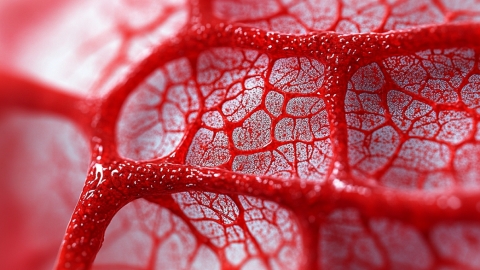How to clear a blockage in the head's blood vessels
Generally, head vascular occlusion may be caused by long-term staying up late, greasy diet, cerebral ischemia, cerebral thrombosis, lacunar cerebral infarction, and other factors. Patients can visit a regular hospital to improve the condition by adjusting their作息 (daily routine), modifying their diet, or using medications. Detailed analysis is as follows:
1. Long-term staying up late
Long-term staying up late can disrupt the body's metabolic rhythm, affect blood circulation speed, and increase blood viscosity, making it prone to head vascular occlusion. Adjust your作息, sleep at a fixed time every day, and ensure 7-8 hours of sleep. Avoid looking at electronic screens before bedtime; listening to light music or soaking feet may help promote sleep.
2. Greasy diet
Regular consumption of fried foods and fatty meats increases fat content in the blood, which can easily form lipid plaques adhering to blood vessel walls, causing head vascular occlusion. Adjust your diet by eating more low-fat, high-fiber foods such as celery, oats, and fish. Reduce intake of greasy foods and drink more water to lower blood viscosity.

3. Cerebral ischemia
Cerebral vasospasm or lipid deposition on vessel walls can reduce cerebral blood perfusion, making vascular occlusion likely. It is often accompanied by dizziness and headache. Avoid sudden rising; stand up slowly when getting up. Under a doctor's guidance, medications such as Nimodipine tablets, Ginkgo biloba tablets, and Yangxue Qingnao Granules may be used for treatment.
Thrombus formation in cerebral vessels blocks the vascular channel, interrupting cerebral blood flow, which can cause symptoms such as slurred speech and limb weakness. Immediate medical attention is required. Under a doctor's guidance, medications such as Urokinase for injection, Clopidogrel Bisulfate tablets, and Butylphthalide soft capsules may be used for treatment. Maintain emotional stability during treatment and avoid strenuous activity.
5. Lacunar cerebral infarction
Occlusion occurs in small cerebral vessels due to arteriosclerosis, causing cerebral tissue ischemia and hypoxia, leading to vascular occlusion. It may be accompanied by limb numbness. Under a doctor's guidance, medications such as Aspirin enteric-coated tablets, Atorvastatin Calcium tablets, and Cytidine 5'-diphosphocholine sodium tablets may be used for treatment. Regularly monitor blood pressure and blood glucose levels to maintain stability.
In daily life, one should adhere to moderate exercise, such as jogging or Tai Chi; maintain a pleasant mood and avoid excessive tension; and undergo regular cerebral vascular examinations for early detection and intervention.




